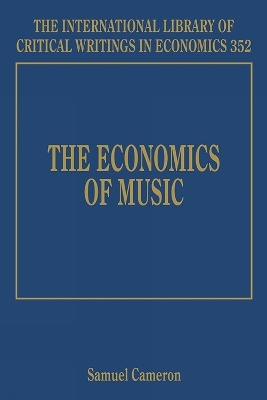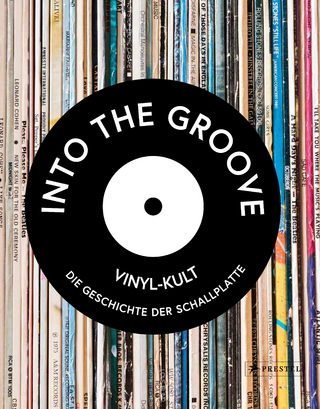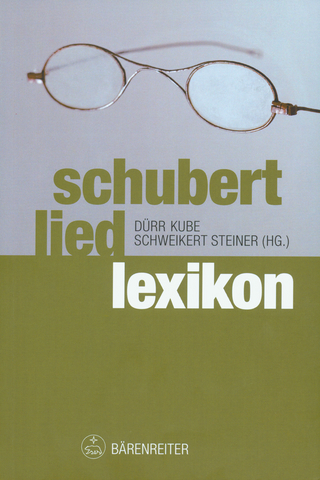
The Economics of Music
Edward Elgar Publishing Ltd (Verlag)
978-1-78811-754-8 (ISBN)
This incisive review analyses the most influential academic research in a burgeoning subject - the economics of music. The literature stems from both mainstream economics journals as well as pertinent works from accountancy, sociology and management sources. Topics discussed include live music, music production, labour markets and ownership and music competitions. This review provides a valuable resource for students and economists involved in this fascinating field, as well as those seeking to enter it.
Edited by Samuel Cameron, former Professor of Economics, University of Bradford, UK
Contents:
Acknowledgements
Introduction Samuel Cameron
PART IHIT MUSIC
1. Storm Gloor (2011), ‘Just How Long Is Your “Fifteen Minutes”? An Empirical Analysis of Artists’ Time on the Popular Charts’, Journal of the Music and Entertainment Industry Educators Association, 11 (1), 61–82
2. David E. Giles (2007), ’Survival of the Hippest: Life at the Top of the Hot 100’, Applied Economics, 39 (15), 1877–87
3. Ken Hendricks and Alan Sorensen (2009), ‘Information and the Skewness of Music Sales’, Journal of Political Economy, 117 (2), April, 324–69
4. Caroline Elliott and Rob Simmons (2011), ‘Factors Determining UK Album Success’, Applied Economics, 43 (30), 4699–705
5. W. Mark Crain and Robert D. Tollison (1997), ‘Economics and the Architecture of Popular Music’, Journal of Economic Behavior and Organization, 32 (2), February, 185–205
6. William A. Hamlen, Jr. (1994), ‘Variety and Superstardom in Popular Music’, Economic Inquiry, XXXII (3), July, 395–406
PART II LIVE MUSIC
7. Robert B. Ekelund, Jr. and Shawn Ritenour (1999), ‘An Exploration of the Beckerian Theory of Time Costs: Symphony Concert Demand’, American Journal of Economics and Sociology, 58 (4), October, 887–99
8. Peter E. Earl (2001), ‘Simon’s Travel Theorem and the Demand for Live Music’, Journal of Economic Psychology, 22 (3), June, 335–58
9. Nancy Bertaux, Kaleel Skeirik and David Yi (2015), ‘Art Music and the Economy: The Modernity Index and the Cincinnati Symphony Orchestra, 1895 to 2013’, International Journal of Economics and Business Research, 9 (4), 376–92
10. Bruno S. Frey (1994), ‘The Economics of Music Festivals’, Journal of Cultural Economics, 18 (1), March, 29–39
11. Grant C. Black, Mark A. Fox and Paul Kochanowski (2007), ‘Concert Tour Success in North America: An Examination of the Top 100 Tours from 1997 to 2005’, Popular Music and Society: Record Charts, 30 (2), May, 149–72
PART III DEMAND FOR MUSIC
12. Stan J. Liebowitz (2016), ‘How Much of the Decline in Sound Recording Sales is Due to File-Sharing?’, Journal of Cultural Economics: Economics of Music, 40 (1), February, 13–28
13. Wilfred Dolfsma (1999), ‘The Consumption of Music and the Expression of VALUES: A Social Economic Explanation for the Advent of Pop Music’, American Journal of Economics and Sociology, 58 (4), October, 1019–46
14. Ercilia García-Álvarez, Tally Katz-Gerro and Jordi López-Sintas (2007), ‘Deconstructing Cultural Omnivorousness 1982–2002: Heterology in Americans’ Musical Preferences’, Social Forces, 86 (2), December, 417–43
PART IV PRODUCTION OF MUSIC
15. William J. Baumol and Hilda Baumol (1994), ‘On The Economics of Musical Composition in Mozart’s Vienna’, Journal of Cultural Economics, 18 (3), September, 171–98
16. F. M. Scherer (2001), ‘The Evolution of Free-Lance Music Composition, 1650–1900’, Journal of Cultural Economics, 25 (4), November, 307–19
17. Karol Jan Borowiecki and Georgios Kavetsos (2015), ‘In Fatal Pursuit of Immortal Fame: Peer Competition and Early Mortality of Music Composers’, Social Science and Medicine, 134, June, 30–42
18. Mark Marotto, Johan Roos and Bart Victor (2007), ‘Collective Virtuosity in Organizations: A Study of Peak Performance in an Orchestra’, Journal of Management Studies, 44 (3), May, 388–413
19. Samuel Cameron and Alan Collins (1997), ‘Transaction Costs and Partnerships: The Case of Rock Bands’, Journal of Economic Behavior and Organization, 32 (2), February, 171–83
20. Cédric Ceulemans, Victor Ginsburgh and Patrick Legros (2011), ‘Rock and Roll Bands, (In)complete Contracts, and Creativity’, American Economic Review: Papers and Proceedings, 101 (3), May, 217–21
21. David Hesmondhalgh (1998), ‘The British Dance Music Industry: A Case Study of Independent Cultural Production’, British Journal of Sociology, 49 (2), June, 234–51
PART V PRICE OF MUSIC RELATED GOODS
22. Kathryn Graddy and Philip E. Margolis (2011), ‘Fiddling with Value: Violins as an Investment?’, Economic Inquiry, 49 (4), October, 1083–97
23. Patrick Georges and Aylin Seçkin (2013), ‘Black Notes and White Noise: A Hedonic Approach to Auction Prices of Classical Music Manuscripts’, Journal of Cultural Economics, 37 (1), February, 33–60
24. Dennis Halcoussis and Timothy Mathews (2007), ‘eBay Auctions for Third Eye Blind Concert Tickets’, Journal of Cultural Economics, 31 (1), March, 65–78
25. Samuel Cameron (2008), ‘E-Baying for Blood?: Noncompetitive Flexible Pricing in Entertainment Ticketing – Some Demand Side Evidence’, Applied Economics, 40 (10), 1315–22
26. Samuel Cameron and Mike Reynolds (2015), ‘The Value of Collecting a Particular Musical Artist: The Case of MiniDiscs’, Briefing Notes in Economics, 91, September, 1–9
PART VI LABOUR MARKETS AND OWNERSHIP
27. Claudia Goldin and Cecilia Rouse (2000), ‘Orchestrating Impartiality: The Impact of “Blind” Auditions on Female Musicians’, American Economic Review, 90 (4), September, 715–41
28. Sam Cameron (2003), ‘The Political Economy of Gender Disparity in Musical Markets’, Cambridge Journal of Economics, 27 (6), November, 905–17
29. Jack Bishop (2005), ‘Building International Empires of Sound: Concentrations of Power and Property in the “Global” Music Market’, Popular Music and Society, 28 (4), October, 443–71
30. Ram D. Gopal, Sudip Bhattacharjee and G. Lawrence Sanders (2006), ‘Do Artists Benefit from Online Music Sharing?’, Journal of Business, 79 (3), May, 1503–33
31. Juan de Dios Montoro Pons and Manuel Cuadrado García (2008), ‘Legal Origin and Intellectual Property Rights: An Empirical Study in the Prerecorded Music Sector’, European Journal of Law and Economics, 26 (2), October, 153–73
32. Samuel Cameron (2006), ‘Rock, Pop and Judicial Efficiency: Economic Considerations in the Spandau Ballet Decisions’, Journal of Interdisciplinary Economics, 17 (3), April, 327–44
33. Maya Bacache-Beauvallet, Marc Bourreau and François Moreau (2016), ‘Information Asymmetry and 360-Degree Contracts in the Recorded Music Industry’, Revue d’Économie Industrielle – Journal of Industrial Economics, 156 (4e trimester – 4th quarter), 57–90
34. Kieran James and Christopher Tolliday (2009), ‘Structural Change in the Music Industry: A Marxist Critique of Public Statements Made by Members of Metallica during the Lawsuit against Napster’, International Journal of Critical Accounting, 1 (1–2), 144–76
PART VII COMPETITIONS
35. Herbert Glejser and Bruno Heyndels (2001), ‘Efficiency and Inefficiency in the Ranking in Competitions: The Case of the Queen Elisabeth Music Contest’, Journal of Cultural Economics, 25 (2), May, 109–29
36. Victor A. Ginsburgh and Jan C. van Ours (2003), ‘Expert Opinion and Compensation: Evidence from a Musical Competition’, American Economic Review, 93 (1), March, 289–96
37. J. Atsu Amegashie (2009), ‘American Idol: Should it be a Singing Contest or a Popularity Contest?’, Journal of Cultural Economics, 33 (4), November, 265–77
38. Luc Champarnaud (2014), ‘Prices for Superstars Can Flatten Out’, Journal of Cultural Economics, 38 (4), November, 369–84
Index
| Erscheinungsdatum | 05.10.2018 |
|---|---|
| Reihe/Serie | The International Library of Critical Writings in Economics series |
| Verlagsort | Cheltenham |
| Sprache | englisch |
| Maße | 169 x 244 mm |
| Themenwelt | Kunst / Musik / Theater ► Musik ► Allgemeines / Lexika |
| Wirtschaft ► Allgemeines / Lexika | |
| Wirtschaft ► Betriebswirtschaft / Management ► Unternehmensführung / Management | |
| Wirtschaft ► Volkswirtschaftslehre | |
| ISBN-10 | 1-78811-754-9 / 1788117549 |
| ISBN-13 | 978-1-78811-754-8 / 9781788117548 |
| Zustand | Neuware |
| Haben Sie eine Frage zum Produkt? |
aus dem Bereich


